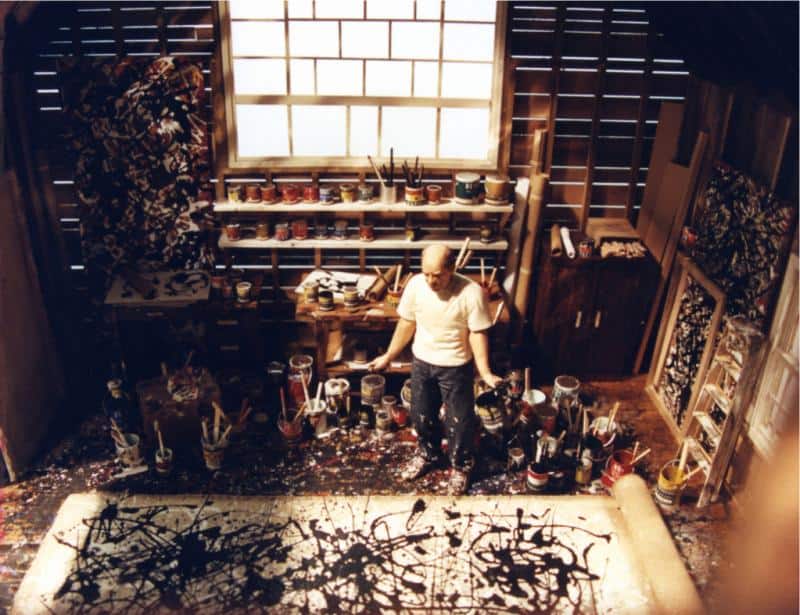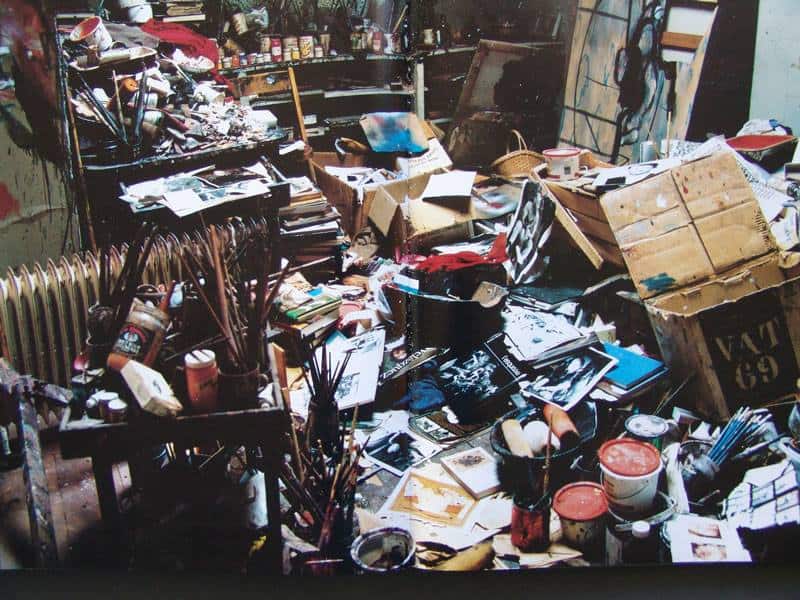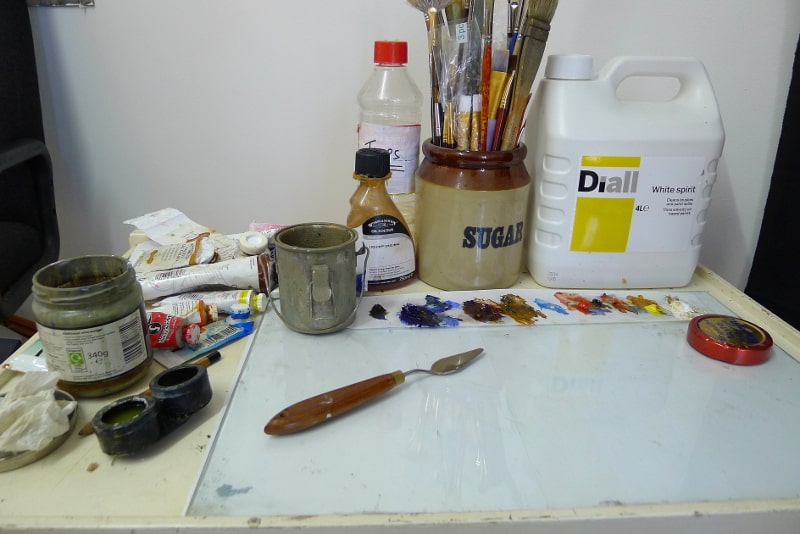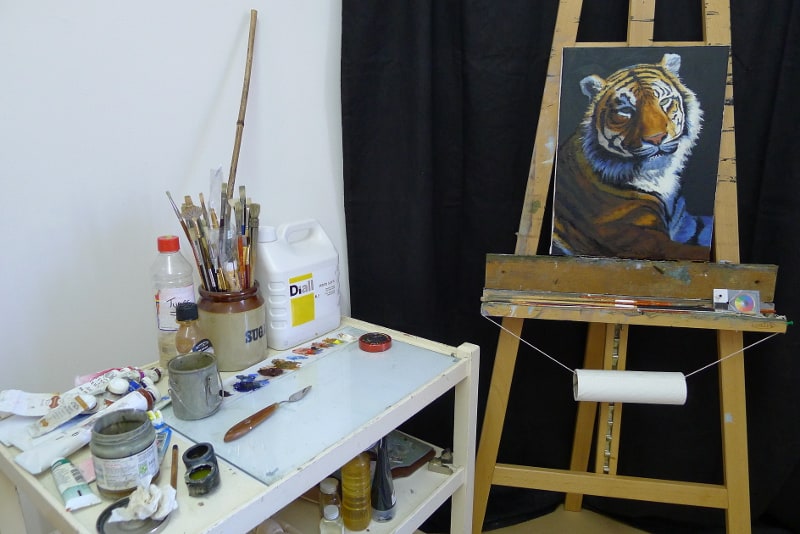Working in a complete shambles of a studio might feel very ‘arty’ and freeing, but if you’re trying to run a successful business and keep your paintings and your painting gear in top condition, it’s not the best way to go.
We’ve all seen photographs of Jackson Pollack’s studio ( crikey! ) –
( Jackson Pollack at work in his studio )
…and check out Francis Bacon’s studio ( dear lord! ) –
( Francis Bacon’s studio – Vat 69 is a Scotch blended whisky )
Now I realize the examples above are on the extreme side of messy, and I am also aware that it didn’t do them any harm. Some artists thrive in a chaotic working environment, excel even, but I am not one of those, and my advice to anyone starting out painting is to keep their art space relatively clean and tidy.
If when you are painting, your palette becomes covered with dirty muddy paint, stop, get some rags out, and clean it. A dirty mud-laden palette will ruin your colours, and therefore your painting, before you can say ..’has anyone seen the cat?’.
The same goes for your brushes, if you have a handful of dirty brushes but just keep on painting, because you can’t really be bothered getting up and going off to clean them, guess what’s going to happen? No matter how well you wipe them, or swish them about in a pot of white spirit, the dirty colour will still come down out of the ferrule and muddy your lovely clean fresh colours.
Now I must admit, that when it comes to washing brushes, I’m as guilty as the next paint covered artist, and I’ll sometimes push it too far before admitting defeat and heading to the sink.
( Glass palette with white paper below )
( Try to keep your work area clean and tidy )
Probably the most important item in my art studio ( apart from my artistic licence, which I have in my back pocket at all times ) is that roll of kitchen paper hanging on my easel; a close second being that gallon of white spirit on my bench.
So:
1) Refill your jam jars, pots and brush cleaners with clean white spirits ( or which ever thinners you prefer ) often.
2) Head to the sink and wash your brushes in hot soapy water when they become overly dirty.
3) Keep your painting space clean and clutter free, and allow plenty of room for your inspiration to join you.
Happy painting
Chris
I look forward to some great comments below, and if you enjoyed this post and found it useful, please share it, thanks.




Great advice!! My best moments while painting occur when I can get lost in the painting (theses always turn out to be my best paintings). However, it is very hard to get lost in my painting (to get into that zone) when I have to dig around for a tube of paint or if I’m fighting with a brush that either needs to be rinsed or was rinsed in dirty water (I work with acrylic paint). Keeping my workspace clean, with my colors organized by the color wheel, and my brushes clean and with reach has had a huge payoff with regard to my ability to focus and for my enjoyment of the painting experience.
I noticed that getting up for clean water as soon as it turns mudy is acually only a tiny distraction. My mind is still with the painting, I stretch a bit, and I get to see my painting from a distance and at different angles. All of this is helpful.
But when I put it off, the resulting battle with my colors, the poor preformance of my brushes, and muddiness on the canvas wind up setting a very negative mood that is very hard to get past and makes it pretty much certain that I won’t get into “the zone” during that session.
Hi Stephanie, I think ‘mess’ has a way of quietly creeping up on us doesn’t it, but I too find it difficult to work in, and especially work happily in, a messy environment. It’s little like, when I give my car it’s annual clean ( yeah, you’re right, I should clean it more often ) it seems to run much better. Similarly, when my studio, palette, brushes.. e.t.c are relatively clean my painting seem to flow much more easily. Chris